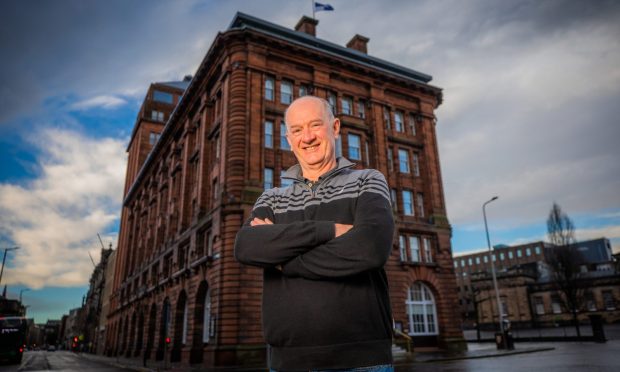Scotland’s last day off before the opening game of the Rugby World Cup involved sending out Dave Edge, of the team staff, to queue at 5.30 am to get tickets for Japan’s premier sporting event prior to the tournament, the Autumn Basho.
The fourth of the five grand sumo tournaments, staged at the 11,000 capacity Ryōgoku Kokugikan venue in the heart of Tokyo, was the chosen outing for 30 of the squad.
Some early arrivals among the press corps have already been to the sumo, notably my friend and colleague, freelance Lewis Stuart, who would be the only realistic choice among us if a rugby writer was short-armed into actually competing.
But even big Lewis was dwarfed by two of the wrestlers in a picture he put on social media. They must consume even more than he does.
There have been fears that Japan may be drunk dry of beer by rugby fans during the Rugby World Cup, so much so that extra supplies are being brought in.
Japan is not a heavy beer drinking culture – sake and cocktails appear to be favoured in bars we’ve visited so far, for research purposes only of course. But there are a number of famous local brews, Asahi, Sapporo and Kirin, for example.
Only one of the tiny bars a trio of us visited last night didn’t appear to have got the message on beer. The rather strange owner had a huge fridge, among a collection of items, many Star Wars and sci-fi figurines and models, plus hundred of boxing posters in a bar with only eight seats.
But he had just six bottles of beer in his fridge. No more. And now, of course, he has none.
Being a Scotland player at the World Cup doesn’t just mean games and training sessions, luxury buses, press conferences and functions, a fair bit of it seems to involve student-style learning.
The players are regularly briefed on much more than the simple playing of rugby, whether that be a visit from referee supremo Alain Rolland to talk about on continuing law changes, by long-time doctor James Robson on what – if any – over-the-counter medicines might fall foul of doping regulations, or an “integrity seminar”.
That last one, where players are told how to deal with issues like unsolicited approaches from gamblers, comes into sharp focus with Wales’ assistant coach Rob Howley being sent home from Japan before the tournament has even begun because of betting allegations.
The facts are coming out in dribs and drabs but it seems the former British Lions scrum-half and coach had been under investigation for two months. He was still sent to Japan before World Rugby sent a detailed list of allegations to the WRU and they brought out another former Lion, Stephen Jones, to replace Howley.
It’s a huge blow to Wales, for whom Howley is a highly distinguished ex-player, captain and coach and a huge part of the backroom team led by Warren Gatland which has taken Wales to three 6 Nations grand slams in recent times.
It seems that gambling syndicates – like those who took cricket to the brink of credibility a few years back – have discovered rugby. World Rugby has reportedly warned players not to use their phones within an hour of game kick-offs during this tournament, among other moves to protect the integrity of the game.


